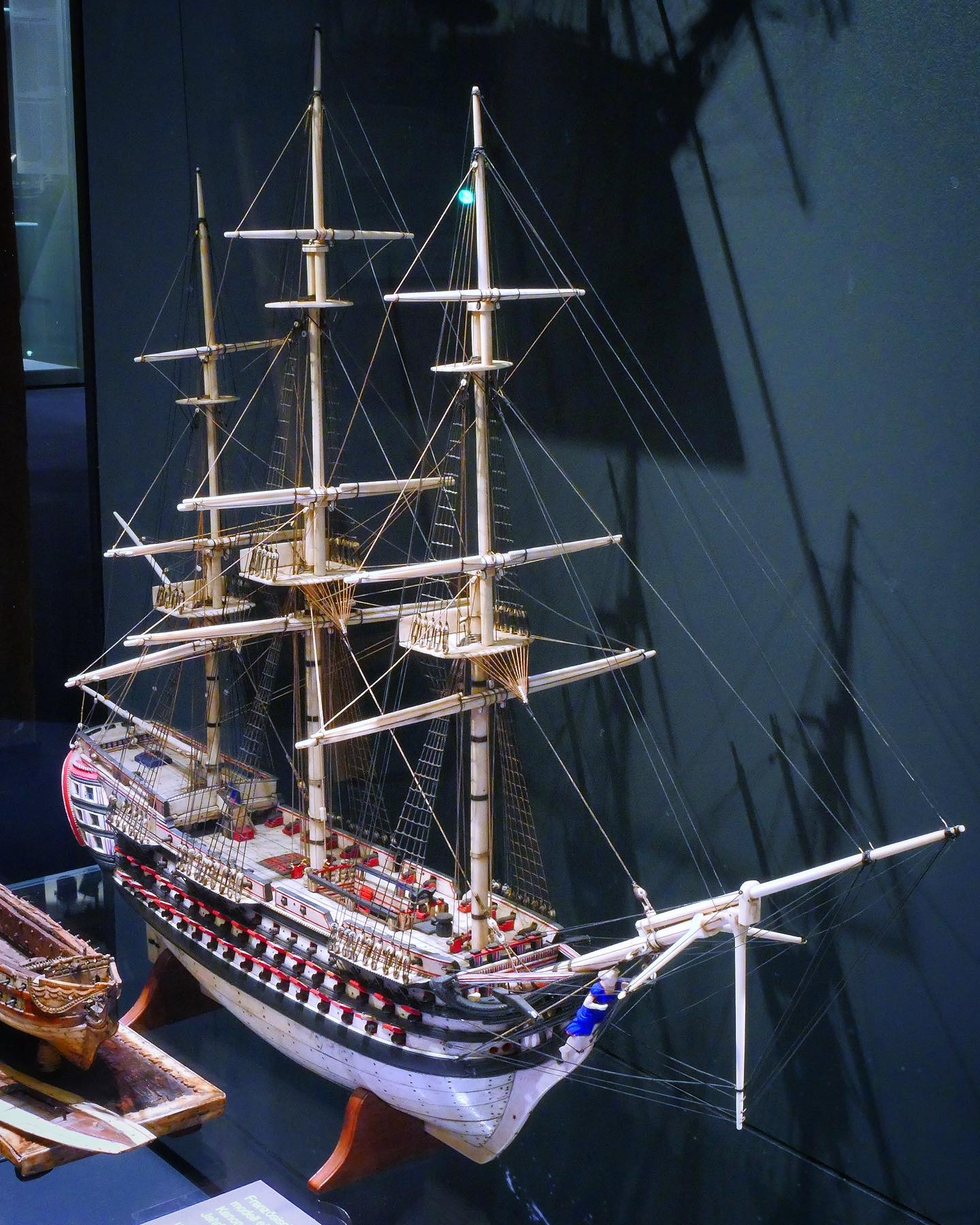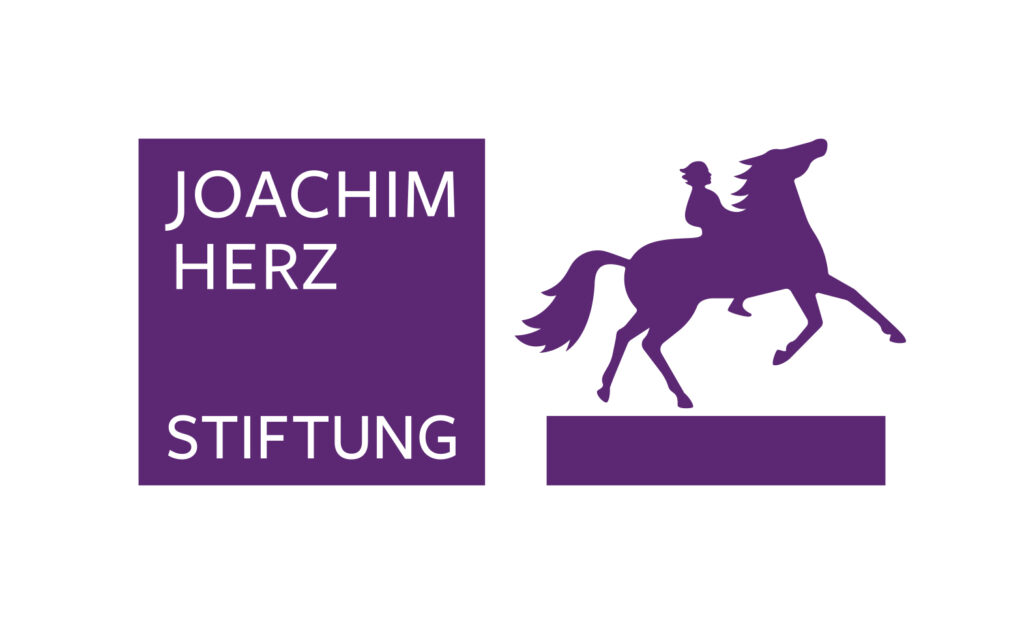Audioguide to deck 8: Art Collection
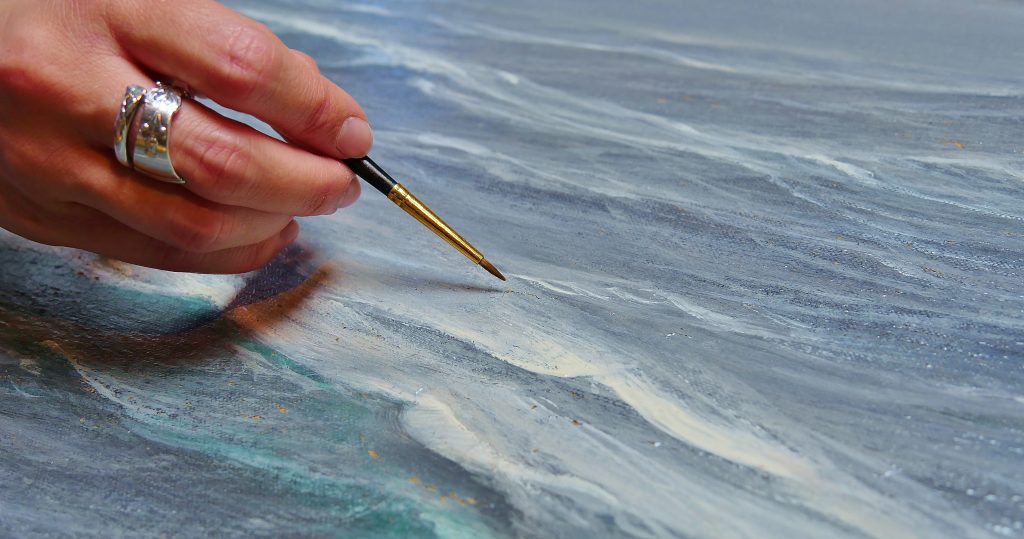
80 – Introduction: Deck 8, Art Collection
Audioguide:
The vastness of the sea, its riddles and mysteries have inspired artists since time immemorial. In the 17th century, maritime marine painting developed as an independent genre of landscape painting. The starting point of the art movement was in the Netherlands, whose economic and political development depended heavily on seafaring.
The depictions of ships, harbours and coastal landscapes bear witness to the conditions of their time of origin. Not infrequently, the paintings depict historical events. They also document scientific findings, for example in the field of shipbuilding. The marine painters are regarded as chroniclers of their epoch.
On this exhibition deck, the International Maritime Museum Hamburg presents paintings from over 400 years of maritime art history. On display are works of Dutch, British, Scandinavian, Russian and German marine painting.
Our treasure chamber has found its place at the front of the floor. In the atmospheric room you will discover ship models made of ivory, amber, silver and gold. The famous bone ships can also be seen there.
Our tour begins at the Dutch marine painting. You will find the next station directly behind the stairs.
81 – The Netherlands
Audioguide:
At the beginning of the 17th century, Dutch marine painters focused on depicting naval battles, famous ships and merchant fleets. Ships symbolised wealth, national pride and the power of the state.
This was followed later by a development that brought greater attention to the atmospheric into focus. The ship was now less the focus of attention. It became part of the overall scenery. Instead of documenting historical or political events, illustrations of sky, sea and landscape now predominated.
Travel impressions that many painters had gathered on journeys through Italy provided new impulses. A southern play of light and colour characterised the depiction of Dutch landscapes.
Other motifs were influenced by the rugged landscapes of Scandinavia. The power of untouched nature inspired the painter Allaert van Everdingen, for example. You can see one of his works in this exhibition.
With the outbreak of the first Anglo-Dutch naval war in 1652, the battle painting experienced a renaissance.
The oldest paintings in the collection are by Jan Porcellis. The painter lived from 1580 to 1632 and was already an esteemed artist during his lifetime. Even his famous fellow painter Rembrandt owned some works by him.


82 – Van de Velde
Audioguide:
Willem van de Velde the Younger and his father Willem van de Velde the Elder are among the most famous marine painters of the 17th century.
For financial reasons, the artists moved from Amsterdam to London in 1672 to work for the English royal family. The warlike conflicts between Holland, France and England had led to an economic crisis in their homeland.
Willem van de Velde the Elder is considered one of the first naval war correspondents. He was an eyewitness at the scene of the fighting. After his relocation, he made drawings of naval battles on behalf of the English, which were directed against the fleet of his home country.
The sketches served as models for later paintings. It was the son’s task to translate his father’s drawings into paintings. Both artists worked closely together in the same studio. In style and technique, van de Velde the Younger was groundbreaking for subsequent generations of artists. His perfect compositions show the founder of English marine painting as a master of perspective.
Right next to this painting hangs a picture by Cornelis van de Velde. He followed in the footsteps of his father and grandfather as a painter.
A drawing by Wilhelm van de Velde the Elder can also be found in this exhibition.
83 – France and Russia
Audioguide:
French marine painting is represented by ship portraits by the Roux family of artists. As many as three generations were engaged in producing the delicate watercolours in the 19th century. In addition to Joseph Roux and his son Ange-Joseph Antoine, his children Mathieu-Antoine, Francois Joseph Frederic and Francoise Geoffroi were among the artists in the family.
The details of the works are remarkable. In addition to scenic subtleties, technical details can also be clearly discerned. The works belong to the genre of captain’s paintings. These are documentary depictions of ships, usually commissioned by the captain.
In their workshop in Marseille, the Roux family also designed and built nautical instruments. They also published nautical charts.
Please also note the small painting on the side wall. It is by Hermine Gudin – one of the few female marine painters.
On the opposite wall you can see paintings by the Russian marine painter Ivan Konstantinovich Ajwasowskij. The artist, who was born in 1817 and died in 1900, left behind over 4000 paintings. Even during his lifetime, his atmospheric paintings were shown internationally in more than 100 exhibitions. Ajwasowskij is considered an admirer of the famous British painter and representative of Romanticism William Turner.

84 – England, part 1: Serres and Dawson
Audioguide:
This section is dedicated to British marine painting.
In the first showcase we meet the French-born artist Dominic Serres. Because he did not agree with the future plans his wealthy parents had for him, Serres ran away from home as a young man and made his way to England via Spain. In his new homeland he became the most successful painter of the Seven Years‘ War and the American War of Independence. King George III appointed him his Royal Marine Painter.
Together with his son John Thomas, Serres wrote the first manual on the technique of marine painting. One of the rare originals is on display here. You can see pictures of Serres and his son on the opposite wall.
A little further on, you will discover pictures from all creative periods of the artist Montague Dawson. The Royal Navy officer made painting his main occupation after leaving the army. Dawson’s favourite artistic subject was the clipper ship, whose beauty and elegance fascinated him.
85 – England, part 2: Mason and Luny
Audioguide:
The majestic painting by Barry Mason is entitled „The White Ship“.
In a text on the back of the painting, the artist, born in 1947, described his work himself:
„A London dock just before the First World War. The sails are hanging out to dry on a steel square-rigged sailing ship. It is to be hauled away at its berth. The tugs are ready. Around the ship the loading and unloading of the vehicles continues.“
The rust visible everywhere in the painting is a symbol of transience and wistful romanticism. The sailing ship recalls the great age of windjammers, which gradually came to an end at the beginning of the 20th century.
The work by Thomas Luny on the opposite wall behind the stairs is also impressive. The painter, born in Cornwall in 1759, suffered from severe arthritis. Nevertheless, he left behind an oeuvre of almost 3000 paintings. His favourite motifs included portraits of ships and sea battles.

86 – Kittoe’s Sketch Book
Audioguide:
Am 02. April 1801 fand vor Kopenhagen eine Seeschlacht statt. Die britische Flotte kämpfte gegen die dänische Seestreitmacht. An Deck des Flaggschiffes „Elephant“ von Admiral Nelson saß der Marinemaler Robinson Kittoe. Während um ihn herum die Schlacht tobte, hielt er das Kampfgeschehen in Skizzen fest. Kittoe war beauftragt als Kriegsberichterstatter Zeichnungen anzufertigen. Nach seinen Vorlagen entstanden später große Gemälde und Grafiken des legendären Seegefechts.
Vor Ihnen ausgebreitet liegt das Originalbuch, dass Kittoe damals mit seinen Skizzen füllte. Der kolorierte Kupferstich „Battle of Copenhagen“ von Nicholas Pocock basiert auf Kittoes Zeichnungen.
Bis heute hat sich die Tradition der malenden Kriegschronisten fortgesetzt. Die Briten beschäftigten noch während des Falklands-Krieges im Jahre 1982 Marinemaler. Auch in Frankreich gibt es bis heute insgesamt 40 „Peintres Offciels de la Marine“ –offizielle Maler der Marine.
Nicht nur kriegerische Ereignisse wurden auf Gemälden festgehalten. Die Arbeit der Marinemaler dokumentiert auch viel Spezifisches über Schiffbau und Schiffstypen.
– Germany: Holst and Achenbach
The exhibition area with German marine painting begins with a highlight of the collection.
This work, simply titled „Seestück“, was painted by the Hamburg artist Johannes Holst in 1913. It shows a depiction of the stormy Atlantic. Born in 1880 on the Elbe island of Altenwerder, the marine painter is considered one of the most influential artists of his guild. Characteristic of Johannes Holst’s works is their impressive attention to detail. The realistic rendering of a stormy, cloud-covered sky was one of the painter’s trademarks.
German marine painting only gained general recognition towards the end of the 19th century. One trigger of its popularity was Kaiser Wilhelm II’s naval enthusiasm.
On the long side behind the staircase are two paintings by Andreas Achenbach. The artist, born in 1815, is an important representative of the Düsseldorf School. Although he did not devote himself exclusively to marine painting, he was one of the pioneers of the genre in Germany. Achenbach left behind an almost incalculable number of beach and coastal paintings.
The expressionist and co-founder of the artists‘ group „Die Brücke“ Karl Schmidt-Rottluff represented a much more modern conception of marine painting. You can see his painting at the entrance to the Treasury. During a visit to the Danish island of Alsen, the artist, born in 1884, discovered the sea as an artistic motif. During the National Socialist era, Schmidt-Rottluff’s paintings were considered „degenerate“.


– Models in the art collection

87 – The Golden Santa María
Audioguide:
The gold model of the „Santa Maria“ in the entrance area of the Treasury is undisputedly a highlight of the collection. The „Santa Maria“ was Christopher Columbus‘ flagship when he discovered America in 1492.
On behalf of the Spanish crown, Columbus was looking for the shortest western sea route to India. During his voyage, however, the legendary navigator mistakenly landed on the Caribbean Islands off the American continent. Throughout his life, Columbus remained convinced that he had dropped anchor in India. The model built in 1992 is the only ship model in the world that was made of precious metals in the authentic frame and plank construction method. Various gold alloys were used as well as platinum for parts of the rigging.

The Treasure Chamber:
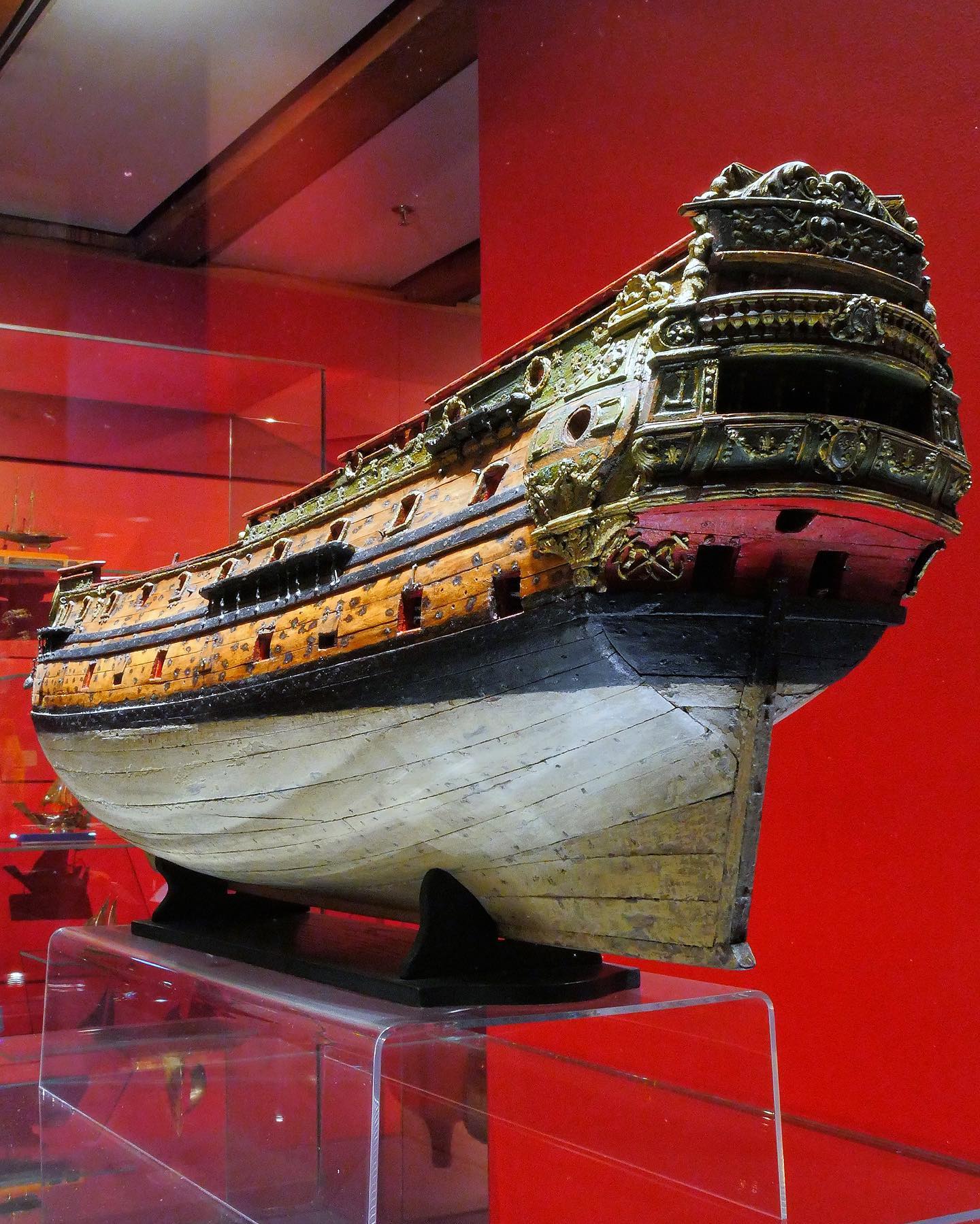

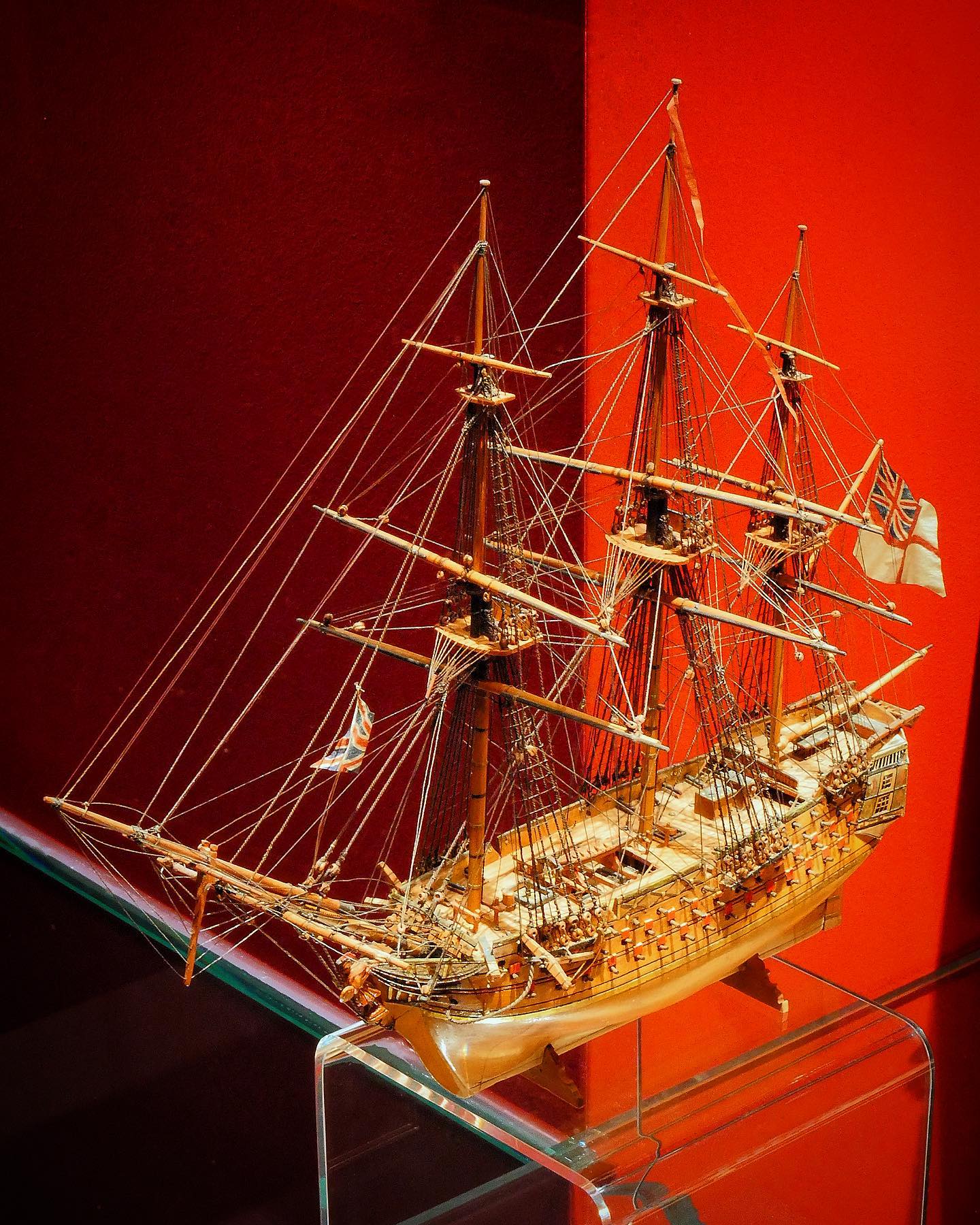
88 – POW Bone Ship Models
Audioguide:
Known as Prisoner Of War Models, the bone ships were built during the Coalition and Napoleonic Wars between 1792 and 1815, mainly by French prisoners of war. This room houses the largest private collection of bone ships in the world.
The prisoners lived under extreme conditions on decommissioned sailing ships – the so-called Hulks – off the south coast of England. They made the models from dried and bleached beef and mutton bones from their food rations. The small works of art were used as barter objects, presumably to supplement the food allotments.
A special model is the bone ship „Chesapeake“ made of darkened whale bones. The American frigate was captured in June 1813. The captain was killed during the battle and the crew was taken prisoner. During the time of internment, the sailors made the historically accurate likeness of the „Chesapeake“ for the captain’s widow. The model is probably the largest bone ship ever built.
